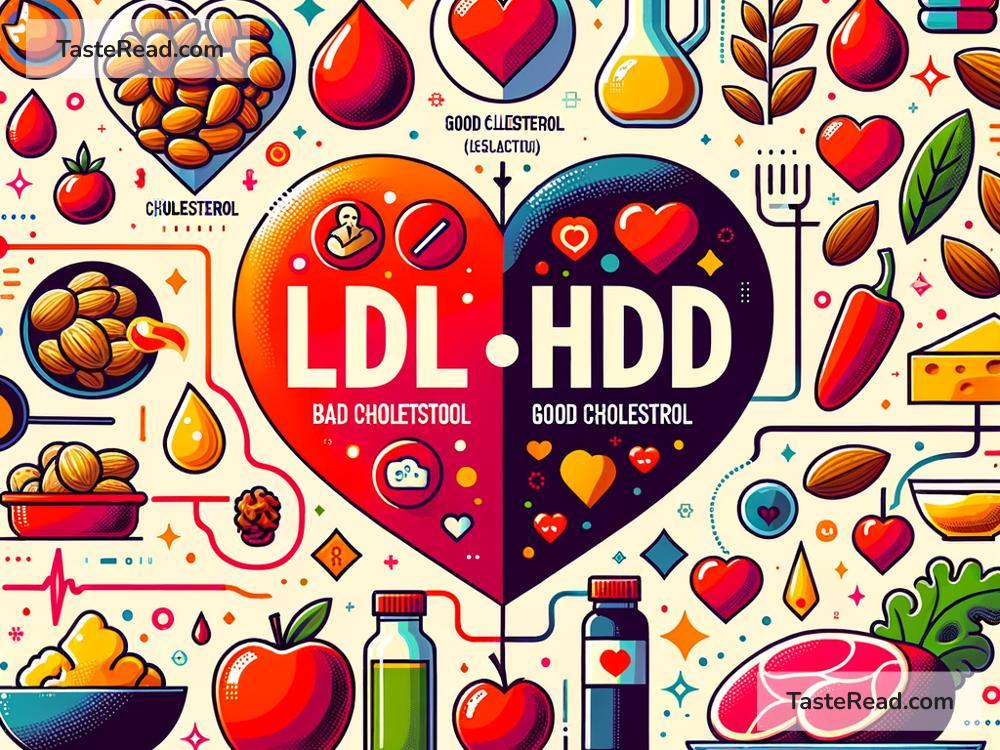Understanding Cholesterol: Good vs. Bad
Cholesterol is something you often hear about — whether from your doctor, in advertisements for heart-healthy foods, or on TV health programs. But what exactly is cholesterol? Is it all bad? Should we be avoiding it entirely? Let’s break it down into simple terms so you can understand the basics and make healthier choices for yourself and your family.
What Is Cholesterol?
Cholesterol is a waxy, fat-like substance found in your blood and the cells of your body. Your liver naturally makes cholesterol because your body needs it to perform important jobs. For example, cholesterol helps build cell walls, produce hormones, and create vitamin D. It’s like a helper that your body relies on to function properly.
But here’s the catch: your body only needs a certain amount of cholesterol to keep things running smoothly. When you have too much cholesterol in your bloodstream, it can lead to health problems — especially for your heart.
The Good vs. Bad Cholesterol Debate
Cholesterol isn’t all bad. In fact, there are two main types of cholesterol, often referred to as “good cholesterol” and “bad cholesterol.” Let’s look at what these terms really mean.
Good Cholesterol (HDL)
“Good cholesterol” is called HDL, which stands for high-density lipoprotein. HDL helps keep your heart healthy by cleaning up excess cholesterol in your blood and transporting it back to your liver. Think of HDL as the “cleanup crew,” working tirelessly to remove the cholesterol that you don’t need. By doing this, HDL helps prevent plaque buildup in your arteries, reducing the risk of heart disease and stroke.
In short, more HDL is better for your health. You can boost your HDL levels by eating nourishing foods (like olive oil, nuts, and fatty fish like salmon) and staying physically active.
Bad Cholesterol (LDL)
“Bad cholesterol,” on the other hand, is called LDL, which stands for low-density lipoprotein. LDL carries cholesterol from your liver to the rest of your body, but too much LDL can cause trouble. When there’s too much LDL in your blood, it can stick to the walls of your arteries and form plaque. This plaque buildup can narrow your arteries, make it harder for blood to flow, and increase your risk of heart attack or stroke.
Think of LDL as the “messy transporter” that, when overloaded, leaves behind harmful deposits. Keeping your LDL levels low is important for good heart health.
What About Triglycerides?
Triglycerides are another type of fat found in your blood. While not technically cholesterol, they’re often discussed alongside HDL and LDL because they play a similar role in your heart health. High levels of triglycerides can combine with low HDL and high LDL to increase your risk of heart diseases. Triglycerides are often linked to weight gain, unhealthy eating habits, and lack of exercise.
To keep triglycerides in check, try eating less sugar and fat, exercising regularly, and keeping your weight within a healthy range.
How Is High Cholesterol Harmful?
When you have too much bad cholesterol (LDL) and not enough good cholesterol (HDL), it can lead to plaque buildup in your arteries. Over time, this can cause atherosclerosis, a condition where your arteries become hardened and narrowed. Narrow arteries make it harder for blood to flow to the heart or brain, which can result in a heart attack or stroke.
Unfortunately, high cholesterol doesn’t usually cause any symptoms — so many people don’t even realize they have it. That’s why it’s important to get regular cholesterol checks, especially as you get older.
How Can You Control Your Cholesterol Levels?
The good news is that high cholesterol can often be managed or even prevented with simple lifestyle changes. Here are some practical tips:
-
Eat Heart-Healthy Foods: Focus on foods that are low in saturated fat (like lean proteins, fruits, and vegetables) and avoid trans fats often found in processed snacks. Instead, consume foods rich in healthy fats, like avocados, nuts, seeds, and fish.
-
Exercise Regularly: Physical activity helps boost HDL (good cholesterol) while lowering LDL (bad cholesterol) and triglycerides. Aim for at least 30 minutes of moderate exercise most days of the week.
-
Maintain a Healthy Weight: Carrying extra weight can raise LDL and triglycerides while lowering HDL. Losing even a small amount of weight can make a big difference to your cholesterol levels.
-
Quit Smoking: Smoking lowers HDL and damages your arteries. Quitting can quickly improve your heart health.
-
Drink Alcohol in Moderation: If you drink, keep it to a moderate amount. Too much alcohol can raise triglycerides and lead to other health problems.
-
Get Regular Checkups: Talk to your doctor about your cholesterol levels so you can catch issues early and take action if needed. For some people, medications may be necessary to keep cholesterol under control.
Final Thoughts: Balance Is Key
Cholesterol itself isn’t bad — in fact, your body needs it. What matters is keeping it balanced. You want a healthy ratio of low LDL to high HDL. By eating well, staying active, and getting regular checkups, you can work toward keeping your cholesterol at healthy levels.
Understanding cholesterol, and the difference between good and bad types, is the first step to protecting your heart health. Small daily choices can add up to big improvements over time. So take care of yourself, make heart-smart decisions, and enjoy life! After all, a strong heart is at the center of a healthy, happy you.


